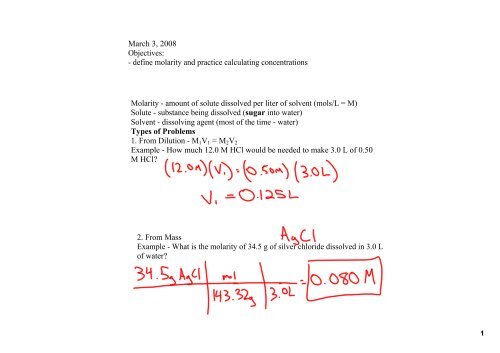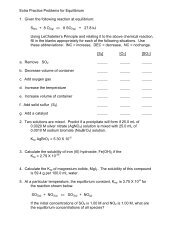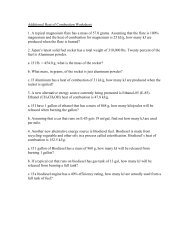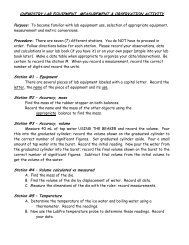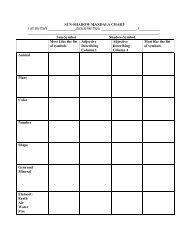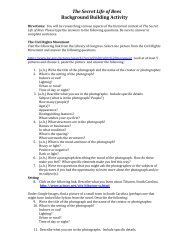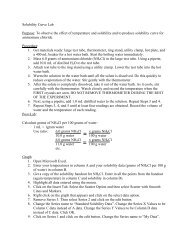March 3, 2008 Objectives: define molarity and practice calculating ...
March 3, 2008 Objectives: define molarity and practice calculating ...
March 3, 2008 Objectives: define molarity and practice calculating ...
You also want an ePaper? Increase the reach of your titles
YUMPU automatically turns print PDFs into web optimized ePapers that Google loves.
<strong>March</strong> 3, <strong>2008</strong><br />
<strong>Objectives</strong>:<br />
<strong>define</strong> <strong>molarity</strong> <strong>and</strong> <strong>practice</strong> <strong>calculating</strong> concentrations<br />
Molarity amount of solute dissolved per liter of solvent (mols/L = M)<br />
Solute substance being dissolved (sugar into water)<br />
Solvent dissolving agent (most of the time water)<br />
Types of Problems<br />
1. From Dilution M 1 V 1 = M 2 V 2<br />
Example How much 12.0 M HCl would be needed to make 3.0 L of 0.50<br />
M HCl?<br />
2. From Mass<br />
Example What is the <strong>molarity</strong> of 34.5 g of silver chloride dissolved in 3.0 L<br />
of water?<br />
1
3. Calculating the number of moles per ion<br />
Example How many moles of each ion are present in 1.25 L of<br />
0.250 M Na 3 PO 4 solution?<br />
4. Stoichiometry of Solution Reactions<br />
Example One way to determine the amount of chloride ion in a water<br />
sample is to titrate the sample with st<strong>and</strong>ard AgNO 3 solution to produce<br />
solid AgCl according to this reaction: Ag + (aq) + Cl (aq) AgCl (s)<br />
If a 25.0 mL water sample requires 27.2 mL of 0.104 M AgNO 3 in such a<br />
titration, what is the concentration of Cl in the sample?<br />
2


